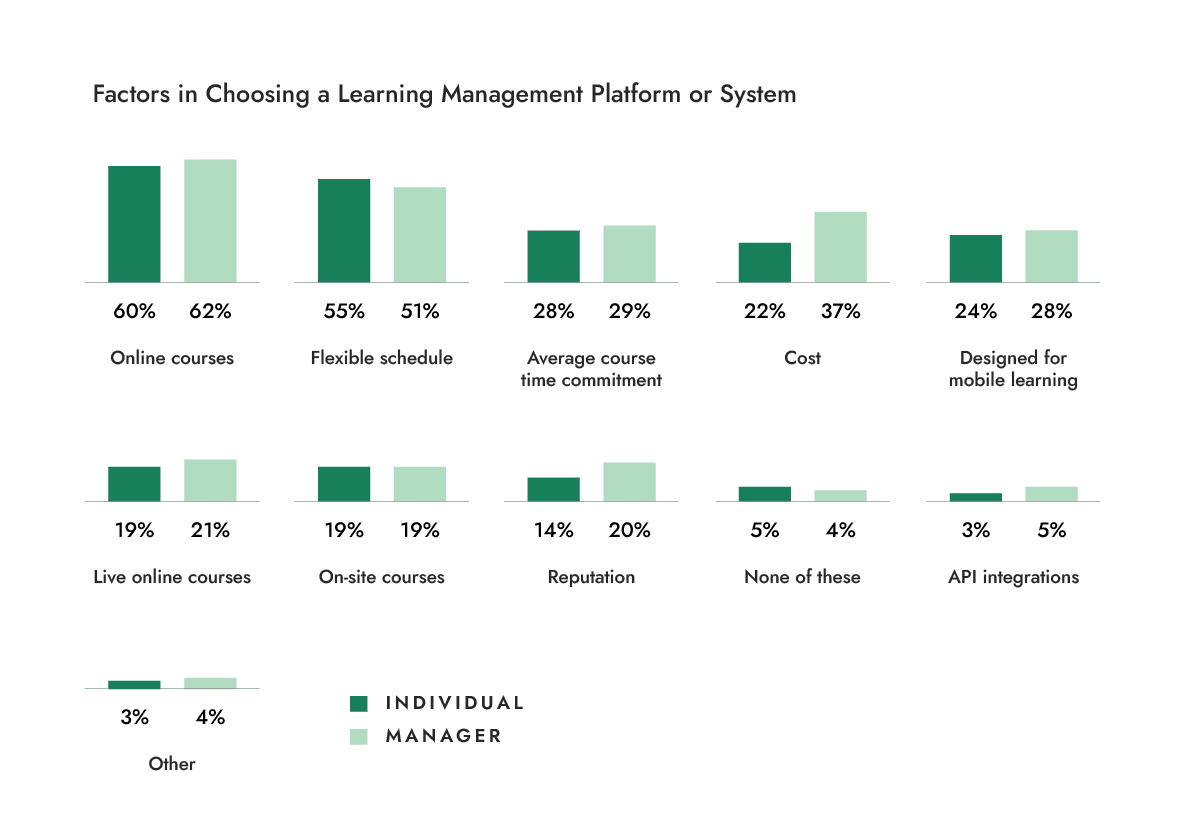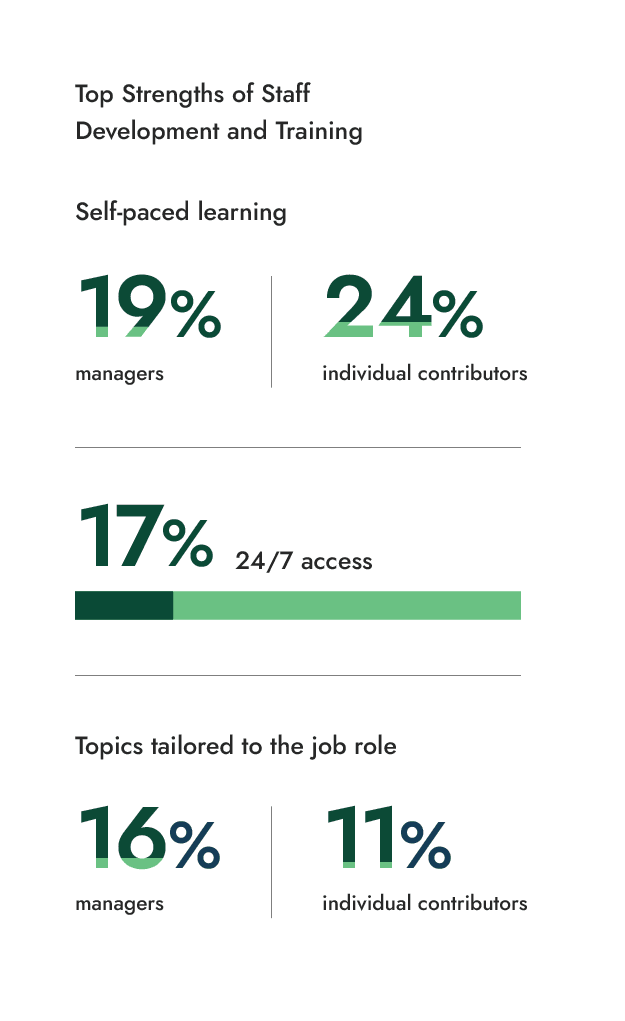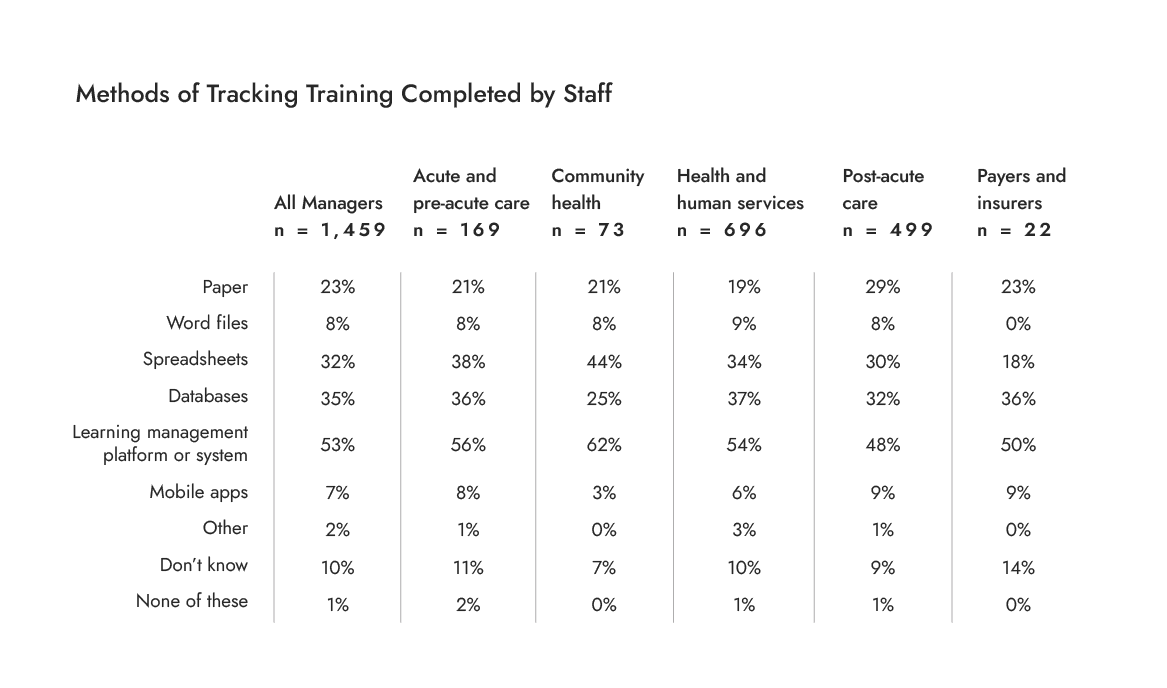Finding 5:
The percentage of managers who said their organization uses a learning management platform or system rose slightly, at 70% this year compared with 69% in our 2021 survey. Managers rated online courses (62%) and flexible scheduling (51%) as the most important aspects in choosing a learning management platform or system.
Insights into learning management platform usage


More than two-thirds of managers said their organization uses a learning management platform or system. The percentage of managers who were not sure raises concerns. This result indicates opportunities for better communication about education tools available. Consistent, clear discussions about learning opportunities can boost staff expertise.
“Strong and effective communication is one of the primary indicators that your organization has a culture of learning.
“Knowledge sharing, a strong sense of community, and the ability to respond rapidly to challenges with innovative, successful solutions are critical to building a culture of learning excellence framework.”
Felicia Sadler, MJ, BSN, RN, CPHQ, LSSBB,
Vice President of Quality and Partner at Relias
Most important factors in platform choice
Managers rated online courses (62%) and flexible scheduling (51%) as the most important aspects in choosing a learning management platform or system. Cost was the third most important factor (37%).
The quality of the online course content is important to ensuring competence, confidence, and compliance. Your training content must keep up with evidence-based practices and present the information in an engaging way.


In a related question on the top strengths of staff development and training, self-paced learning topped the list (managers 19%, individual contributors 24%).
Next highest were 24/7 access (17% of each group) and topics tailored to the job role (16% of managers, 11% of individual contributors).
To ensure flexible scheduling and tailored education, your platform should allow managers to assign courses easily and employees to complete them at their convenience.


Tracking training completions
Almost a quarter of managers, 23%, said their organization still uses paper to track training completed by staff, and almost a third — 32% — said they use spreadsheets. Those percentages have declined since our 2021 survey, which found 28% using paper and 47% using spreadsheets.
Just over half of managers (53%) use a learning management platform or system for tracking training, and that percentage has dropped since our 2021 survey, when 57% used a learning management system for tracking training. More than a third (35%) said they use databases in 2023, compared with 29% in 2021.
For more insights into manager responses, we can see the methods of tracking training broken out by healthcare sector.


To ease the L&D team’s burden, it is helpful to have a learning platform that easily identifies training completed by staff and remaining education gaps. That data serves as an important tool to guide future learning.
Freeing up time spent manually tracking training could allow L&D staff to focus on providing more targeted education and respond to rapidly changing needs, such as new protocols, regulations, or patient populations.
Takeaway
As workload continues to be a challenge for healthcare professionals, easily accessible learning is important, as is streamlined administration. A learning management platform provides tools for organizations to more easily link training to assessments, provide 24/7 access to education, offer varied learning modalities, track completions, and ensure compliance in one integrated system.






